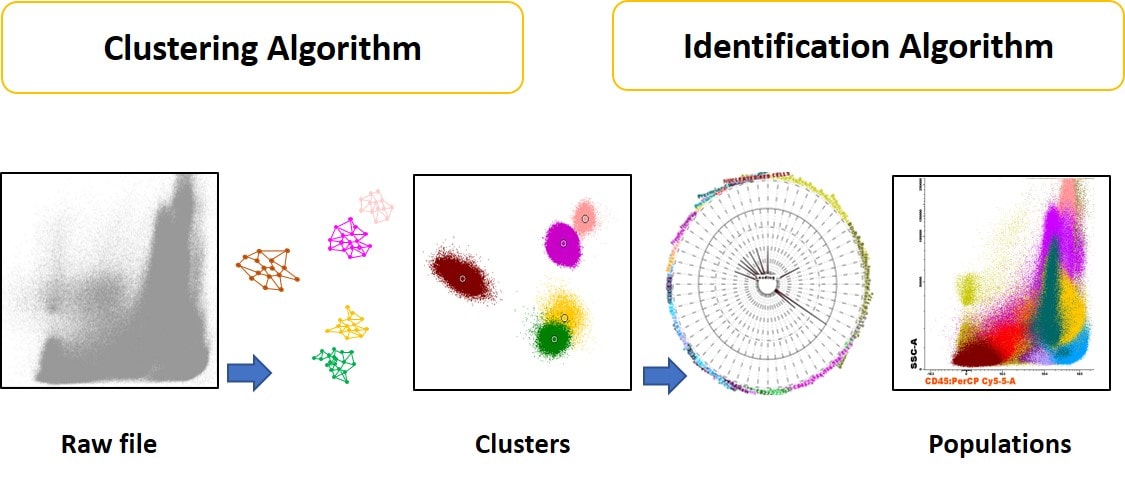Software
Automated analysis
Last update: October 1st, 2019
Technological advances in flow cytometry field are increasing the size and dimensionality of data sets, emphasizing the need of new tools for data management and analysis.
Sample handling, instrument type and setup, gating and analysis strategies, and ways in which the data are reported can all vary in different laboratories. These differences can all affect the results and how they are interpreted. Standardization of all these steps is required in order to apply automated computational algorithms(1).
There are many automated techniques that can be applied to flow cytometry data analysis, such us spanning-trees, graphical methods, also the nearest neighbours principle that can be embedded in algorithms to define the relative distribution of data by appropriately placing a given number of prototype vectors in the space generated by the FC parameters measured, etc(2).
Among automated techniques, Automated gating is a really useful one since it contributes to the process of cell population identification(3).
- The automated gating methods are mainly based on clustering techniques. Each one of these algorithms has its own characteristics and is more suitable for certain types of problems
- There are many classification schemes for the clustering techniques, such us supervised vs. unsupervised techniques. The major difference between them is the labelling. In supervised techniques, the data is labelled while in the unsupervised technique the data is not labelled
- Multidimensionality or clustering space affects the quality and the performance of clustering
- Some clustering techniques provide the number of clusters automatically, others allow to directly include this number or to adjust the number indirectly through other parameters
- Cluster labelling is the process of cell population identification. This process can be independent of the automated gating process or can be an embedded component
In Infinicyt™ the Automated Gating and Identification tool includes the following steps:
- Unsupervised clustering step: groups of events are identified with clustering algorithms based on their similarity.
- Cluster labelling: the software compares these groups of events (clusters) with the reference database to evaluate if they are identical or altered.

Figure 1. Automated Gating and Identification Tool included in Infinicyt™
After this process, Infinicyt™ shows a report that automatically updates and informs about the most relevant information related to the sample and also about technical problems that have a total impact on the feasibility and quality of the result.
To learn more about the Automated Gating and Identification tool, please visit:
Resources
Publications:
- Finak G. et al., (2016) Standardizing Flow Cytometry Immunophenotyping Analysis from the Human ImmunoPhenotyping Consortium. Sci Rep. 6:20686. Go to publication
- Pedreira, C.E. et al. (2013) Overview of clinical flow cytometry data analysis: recent advances and future challenges. Trends in Biotechnology 31, 7, 415-425. Go to publication
- Pedreira, C.E. et al. (2019) From big flow cytometry datasets to smart diagnostic strategies: The EuroFlow approach. J Immunol Methods. 12:112631. Go to publication

